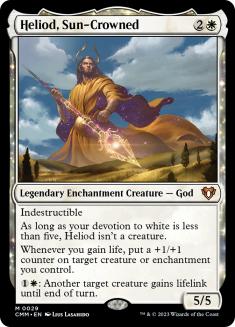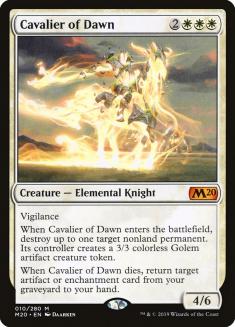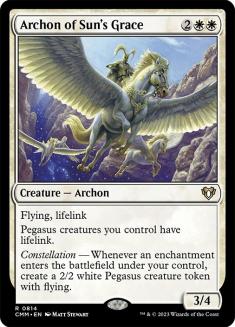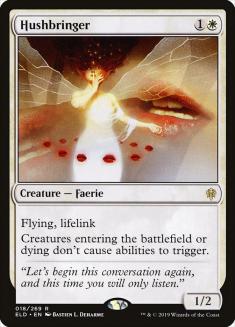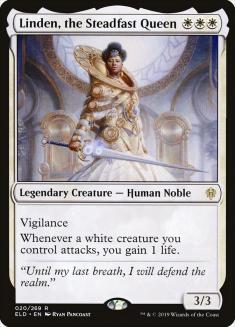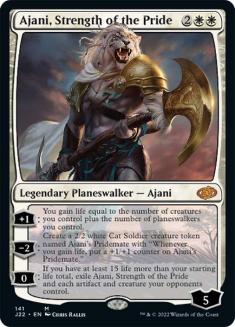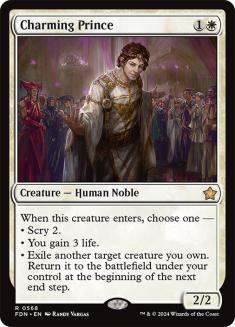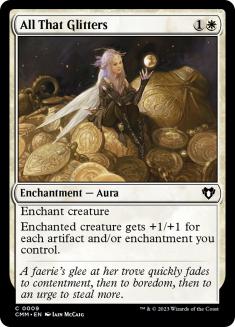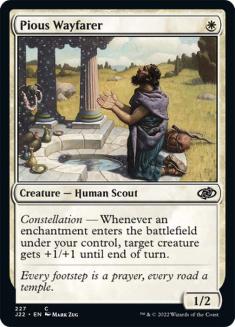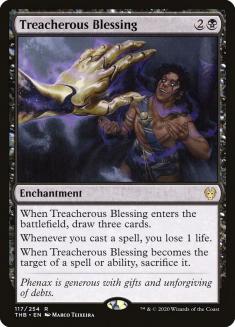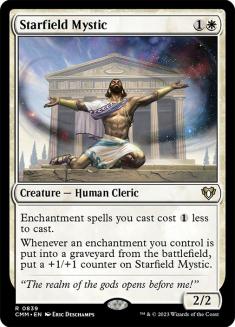Going into Theros Beyond Death, white needed some serious help if it wanted to make a mark on Standard. It’s been one of the weaker colors for a while now, often propped up by single cards like Teferi, Hero of Dominaria or Kaya’s Wrath that fill specific holes in the format.
Thankfully, Theros Beyond Death delivered. Or rather, Heliod, Sun-Crowned has delivered. Granted, Theros Beyond Death also provided plenty of support for Heliod (and white certainly needed it), but there would be no decks without Heliod itself.
The curve of Alseid of Life’s Bounty into Daxos, Blessed by the Sun into Heliod, Sun-Crowned is a powerful one. Arcanist’s Owl or Archon of Sun’s Grace on Turn 4 should cement your advantage. White also has many incidental sources of lifegain, which allows Heliod to grow your team rather quickly. Heliod’s 5/5 indestructible body is the best part about the card. It lives through sweepers (doing a fine Gideon Blackblade impersonation), blocks forever, and gives you a huge creature to attack with turn after turn.
Standard is in a weird spot where the engines are plentiful and difficult to contain. Spot removal tends to not be very important because it won’t do a good enough job at breaking up synergy. If it were cheaper, you could probably get away with playing more of it because even if it didn’t break up their synergy, you could get a tempo advantage off it. Instead, you end up spending two or three mana to remove something that already gained your opponent value and you fall further behind.
Most decks are focused on trying to do their thing, whatever that may be, while slightly disrupting their opponents. Finding a configuration that is naturally favored against your opponents, difficult to break up, and snowballs well is exactly what you should be looking for.
Sweepers are clearly an issue for a deck that’s mostly a pile of white creatures, but any sweeper that’s damage-based is going to be rendered largely ineffective thanks to your +1/+1 counters and careful planning. Anything that leaves a Heliod behind isn’t going to be enough if you’re able to sandbag some devotion enablers too.
Outside of getting Heliod online, there isn’t much of a need to get your devotion number as high as possible. You don’t have to put in work to get Daxos out of reach of most things, Daybreak Chimera is solid but not exactly what you’re looking for in most builds, and Nyx Lotus is cute but likely not viable, at least in Mono-White. Focus on getting Heliod online with reliability and don’t focus on devotion very much past that.
Creatures (30)
- 4 Tithe Taker
- 2 Tomik, Distinguished Advokist
- 2 Cavalier of Dawn
- 4 Arcanist's Owl
- 2 Giant Killer
- 3 Linden, the Steadfast Queen
- 4 Daxos, Blessed by the Sun
- 4 Heliod, Sun-Crowned
- 1 Archon of Sun's Grace
- 4 Alseid of Life's Bounty
Planeswalkers (2)
Lands (24)
Spells (4)

This version might be too fair. There are solid threats, interaction, and some card advantage, but you’re not doing anything broken.
With all the enchantment creatures in the set, Cavalier of Dawn can truly shine. You didn’t have much to return before but now the options are endless. You can even target your own Heliod if you just want it to make a 3/3.
Archon of Sun’s Grace is a very cool card but doesn’t provide any immediate value on Turn 4. Still, you could make the argument that it’s supposed to be used like a Tireless Tracker or Emeria Angel, waiting until you can get value from it. I envision that taking too long, though.
There are sixteen enchantments maindeck for Arcanist’s Owl and more hits in the sideboard, although you should probably sideboard out the Owls when you bring in Hushbringer.
One of the best sideboard cards in Standard is Hushbringer because it shuts down things like Risen Reef and any “dies” triggers the various Sacrifice decks are playing, which is actually a lot of decks at the moment. If you’re playing a ton of those effects yourself, you should probably look for a different way to fight those matchups but sometimes it’s necessary.
Let’s do something synergy-based.
Creatures (28)
- 4 Ajani's Pridemate
- 4 Healer's Hawk
- 4 Arcanist's Owl
- 1 Charming Prince
- 3 Linden, the Steadfast Queen
- 4 Daxos, Blessed by the Sun
- 4 Heliod, Sun-Crowned
- 4 Alseid of Life's Bounty
Planeswalkers (2)
Lands (24)
Spells (6)

Who would have thought that the broken version would include Linden, the Steadfast Queen? Attacking with even a couple of creatures with Linden and Heliod on the battlefield tends to end the game very quickly. Additionally, there are Ajani’s Pridemates that get out of control quickly.
Ajani, Strength of the Pride is also surprisingly strong. Each mode is very relevant and it’s not uncommon to be able to use the ultimate. Against any green deck, the ultimate is often game over.
Charming Prince checks many boxes for this archetype since it can gain life, help set up your combos, and even blink Arcanist’s Owl for additional value. However, the 2/2 body and single pip for devotion are weak and it might even be worse than Tomik, Distinguished Advokist. Given the prevalence of Nissa, Who Shakes the World, Tomik might be worth playing whether or not it’s better than Charming Prince in a vacuum.
Mobilized District is solid if you don’t want to play Arcanist’s Owl but still want a relatively high land count. Being able to pump it with Heliod and live through a sweeper is awesome.
I could also see a version of this deck that doesn’t mess with Arcanist’s Owl. If you’re trying to be as aggressive as possible, you don’t need the card advantage from the Owl, and as I mentioned, there’s very little reward to going hard on devotion.
Creatures (37)
- 4 Ajani's Pridemate
- 4 Healer's Hawk
- 4 Venerated Loxodon
- 3 Law-Rune Enforcer
- 4 Faerie Guidemother
- 3 Giant Killer
- 3 Linden, the Steadfast Queen
- 4 Daxos, Blessed by the Sun
- 4 Heliod, Sun-Crowned
- 4 Alseid of Life's Bounty
Lands (21)
Spells (2)

Depending on the metagame, I could see this being a stronger version of the midrange lifegain deck. If people continue trying to do a sweet thing rather than interact with your threats, a deck like this can run them over quickly, just like Rakdos Knights did at Grand Prix Portland last month. I’m more interested in a midrange version at the moment, but will be keeping this in my back pocket for the future.
Aren’t we supposed to building around enchantments in Theros? Karametra’s Blessing and Pious Wayfarer are solid, but unless you’re splashing for Setessan Champion, there isn’t much of a reason to have Auras in your deck.
Well, I tried regardless.
Creatures (24)
- 4 Faerie Guidemother
- 4 Daxos, Blessed by the Sun
- 4 Pious Wayfarer
- 4 Heliod, Sun-Crowned
- 4 Eidolon of Obstruction
- 4 Alseid of Life's Bounty
Lands (20)
Spells (16)
Sideboard

This deck has a whopping 28 enchantments! I had to make some concessions to overall card quality in order to get that many in the deck but I wanted to make All That Glitters and Pious Wayfarer as powerful as possible. You also get the benefit of Karametra’s Blessing not requiring your two-drop to be enchanted in order to grant hexproof.
So, we managed to make All That Glitters powerful, but is that actually good enough? I would wager not and would recommend trying to build around a light splash of green for Setessan Champion.
Finally, we get to the wild stuff.
Creatures (24)
- 2 Cavalier of Dawn
- 4 Arcanist's Owl
- 1 Giant Killer
- 4 Charming Prince
- 1 Shepherd of the Flock
- 4 Daxos, Blessed by the Sun
- 4 Heliod, Sun-Crowned
- 4 Alseid of Life's Bounty
Lands (24)
Spells (12)
Sideboard

Treacherous Blessing is a difficult card to utilize since it can’t simply slide into any deck. If you can ignore the downside, it’s one of the most powerful card drawing engines we’ve seen in a while.
Targeting it with Teferi, Time Raveler; Kiora, Behemoth Beckoner; Shepherd of the Flock; Alseid of Life’s Bounty; or even Heliod works. You can also sacrifice it to Final Payment, Doom Foretold, or Enigmatic Incarnation. Any old Disenchant, like Knight of Autumn or Cavalier of Dawn, would also do it. You could also gain enough life to make the downside not matter.
White has no shortage of ways to negate the drawback on Treacherous Blessing but you really want a way to spend the cards you get quickly. Nyx Lotus is the best thing I could come up with aside from playing as low of a curve as possible. White doesn’t have great mana sinks outside of Dawn of Hope, but being able to use Heliod on each of your creatures every turn will likely end up winning you the game.
The lifegain lands alongside Heliod are neat but Heliod promotes having a lower curve and getting him online as quickly as possible, so you typically don’t want many lands that enter the battlefield tapped. In this deck, we want as many black sources as possible for an early Treacherous Blessing but also want to be able to cast Arcanist’s Owl on Turn 4. Fabled Passage for basic Swamp isn’t a great option, so Scoured Barrens makes the cut.
Where is Elspeth, Sun’s Nemesis in these decklists? Well, she could be useful in a more aggressive version of the deck as a way to constantly apply pressure, but as I mentioned earlier, Standard is about synergy and snowballing and Elspeth is too small-ball for her abilities to actually matter. In short, Elspeth is playable, but the way the decks have to be built dictates that she mostly sit on the sidelines.
Starfield Mystic is another card I thought I’d be more interested in. Lowering the cost of enchantments seems great in theory, but you’re usually more interested in having more enchantments in your deck for your various triggers instead.
For the lifegain decklists, I’m interested in versions that contain Bishop of Wings and Angel of Vitality, but that likely requires a splash for Aurelia, Exemplar of Justice or Seraph of the Scales in order to have enough Angels. That’s not a huge downside, but those Angels compete with Arcanist’s Owl, both because the Angel package lowers your enchantment count and because you can’t play too many four-drops. It might be worth it to have a higher power level overall.
Leylines are another possible way to increase your devotion count if you’re desperate. Aside from Leyline of Abundance and maybe Leyline of Combustion, the Leylines don’t seem great in maindecks, but Leyline of Sanctity could carry you against burn spells and targeted discard, so that’s an option in the future.
No matter how you choose to build your Heliod deck, you can’t really go wrong. The core has a ton of power and the surrounding support is solid as well.


